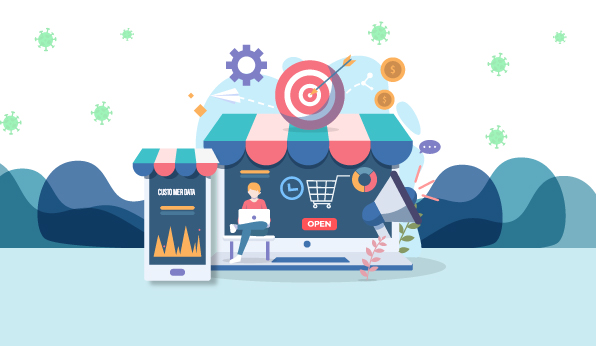Identity is A Constant During Continuing CDP Evolution: How First- and Third-Party Data Can Be a CDP’s Key Differentiator
June 22, 2020“What should I be looking for in a CDP?” This is the first question from nearly every brand that’s in the market for a Customer Data Platform. As a leading data provider, we have conversations on the exact subject with brands and publishers every single day.
CDPs are an evolving technology and they can still seem nebulous to the brands that are considering them for their martech stack. But there is a universal way to make a CDP and the brands that leverage it more competitive: provide the best foundation of deterministically linked, updated, complete and enhanced customer identity data possible.
Brands need to know exactly who their customers are — especially in rapidly shifting online and offline environments. And their marketers demand a blend of authoritative deterministic data as well as probabilistic data resources in order to be confident in their decision making. To keep pace with the evolution, a CDP has to help unlock the power of a brand’s first-party data and deliver the third-party data that fills in the gaps from the moment of ingestion all the way through deployment.
As Winterberry Group has said in its research, among CDPs’ biggest challenges are “wrangling customer data into a persistent, universal profile and making the data available for analysis and action.” Up-to-date first- and third-party data are critical to providing relevant engagements in all channels and improving the customer experience — especially with the imminent demise of third-party cookies. Linked consumer data with life stage and preference insights is the glue that creates the “stickiness” that will make a CDP an essential part of any brand’s martech stack.
The most competitive CDPs drive identity resolution. They provide authoritative linking, and utilize a combination of client data, third-party deterministic consumer data, and powerful linking technologies. But they don’t do it alone. Here are the top identity-driven factors to look for in a CDP.
Powerful Data from the Start
Unifying customer data across platforms and marketing channels is the crucial first step for any CDP. It ensures accurate linking at the moment that data is ingested into the platform. But ingestion must also include rigorous processes to verify, clean, hydrate, normalize, complete, and score the data, ensuring that a brand’s first-party identity information is complete, accurate, and deployable.
Ongoing Data Optimization
Data can be messy. It must be cleaned and completed upon ingestion in order to build a foundation for success. But that’s only the beginning of data maintenance. CDPs must continuously optimize a brand’s customer data, linking multiple (and conflicting) data elements from disparate silos to ensure that identities are resolved to a single consumer, while keeping the data up-to-date. In maintaining linked, de-duplicated and cleansed consumer identity data, the CDP will empower brands to put an end to data silos and minimize costly data decay. In doing so, marketers are able to reduce waste and maintain their ability to reliably reach the right consumers at scale with relevant and compelling messaging as their lives evolve and change. Maximizing data hygiene now minimizes the mess that customer service agents must clean up after misidentifying a loyal customer later.
Paint the Full Picture
Accurate linkages within a CDP ensure a 360-degree view of consumers. But CDPs should continue to add value by providing a wealth of demographics that marketers — no matter their industry — can activate. CDPs that can offer a comprehensive view of each customer that consists of both online and offline indicators provide the greatest value to brands. Aside from identity markers such as name, address, phone and email, CDPs should also include rich attributes to enable personalized messaging and segmentation.
Personalization Is Not Optional
Customers expect personalization in nearly every interaction with a brand. CDPs that leverage the best third-party data available ensure marketers are in a position to create relevant and valuable 1-1 messaging. And a CDP’s lifestyle attribute data and intelligence should not only fuel personalization, but also track changing preferences and needs as life journeys unfold (e.g. marriage, presence of children, new homes) so brands’ messaging can evolve along with their customers. By filling these gaps in consumer records with third-party data, brands are empowered to drive smarter marketing that leads to better conversion rates, ROI, and lifetime value.
No matter the brand’s goal, a CDP’s handling of identity data is a competitive differentiator. CDPs that can verify, score, link, cleanse, normalize first-party data offer the strongest possible foundation for a 360-degree view of the consumer and can become an integral part of the martech stack. CDPs must empower brands to personalize interactions with relevant messaging no matter the customers’ life stage through identity completion and enrichment. Adding rich third-party demographic and lifestyle attributes will help CDPs stand out from the pack so that these CDPs will enjoy the same brand loyalty they enable for their own brand customers.


